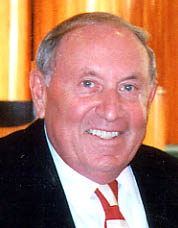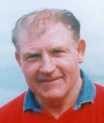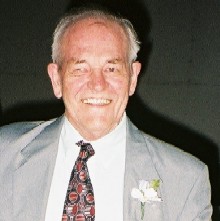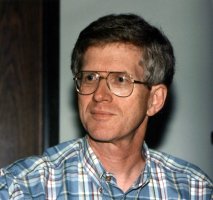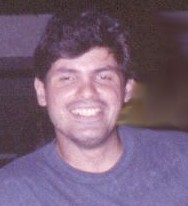
By Eric Shackle
Harriette Leidich, Aged 99, World's Oldest Columnist
As former pin-up girl Margaret Caldwell, 105, of Mesquite, Nevada, no longer writes for the Desert Valley Times, her title of The World's Oldest Columnist goes to Harriette B. Leidich of North Bennington, Vermont.
Harriette, who is looking foward to celebrating her 100th birthday on April 19, has written a breezy column for Vermont's Bennington Banner for the last 16 years,
James Therrien, editor of the Bennington Banner, says, “Harriette has always been an amazing columist regardless of her age, one who rarely needs editing and who learned how to write and how to produce a newspaper back in the old days of lead type, early manual typewriters and many aspects only she could fully describe.
"She writes now on an infrequent basis, and just when we have begun to wonder if she is finally going to retire from journalism completely, a batch of two or three columns will come in, well written and interesting.”
Daughter of a Nebraska newspaperman, she began her column writing career at the age of 14. She worked because of “not being able to go to college” and has been in the business almost her entire life.
She married George A Lerrigo, amd then she and her husband bought a weekly newspaper in Overbrook, Kansas. During World War II she was a linotype operator in Excelsior Springs, Missouri.
In Massachusetts, one of 10 states where she has lived, she had a mimeographing business and was editor of an award-winning newsletter for the League of Women Voters.
She writes her column on “an old trusty typewriter” from home, where she lives alone. “I had a computer installed,” she says, “but I just couldn’t grasp it.”
Owning the papers led to learning more of the business, Leidich said. "I learned the whole printing trade. I could put ads together, I could fill up the forms and run the Linotype and did the bookkeeping," she said. "We had one devil, one printer's devil [an apprentice], and he really was a big part of the organization. That was primitive. That was really, really primitive back then.
"When you own a newspaper you have to be the whole thing. You have to be the man on the street. You have to be whatever. You have to go to all the little town affairs," she added. "After five years my husband decided that it wasn't his thing. So, he went into health care."
Leidich would remain involved in publishing, though. She worked for another paper running the Linotype.
And over the years she would publish several different newsletters for various organizations. "I always had some little newsletter going somewhere," she said. "I've always been dibbling and dabbling in publishing."
It wasn't until 1995, when Leidich moved to North Bennington, that she began her Banner column. "I had another name for it, but [former Editor Robin Smith] chose "Senior Moments," and it stuck. I began sending in columns. They used all of them. They weren't very discerning then," Leidich said.
Leidich's column is typically a collection of several thoughts. And it is almost always focused on matters of interest to those in a small town. "I'll tell you, there's more stuff that goes on in a little town that people don't know about that's very important," she said.
"Maybe that's because I learned to be gentle as I got older. I probably was a very feisty person in that little country newspaper," she said.
It was Leidich's doctor who first began to wonder if she might be one of the oldest working columnists. It was her son, Charles Lerrigo, who then picked up the ball and took to the Internet to investigate. It wasn't long before the National Association of Newspaper Columnists was interested.
"It's exciting and yet it's kind of scary to have all this happen when I'm so old," Leidich said. "It just kind of mushroomed. The whole thing kind of mushroomed and I'm just blown away by it."
At 99, Leidich said she still uses a typewriter to put her thoughts on paper. "I don't have a computer."I had one put in when I moved here. I absolutely could not make it go through this head," she said.
Her son, George Lerrigo, says, “Living in a small town she learned the ‘neighbor’s story’ is a news story and is constantly on the prowl for newsy items of a local nature.”
The National Society of Newspaper Columnists recently honored Harriette with a gift membership. President Ben Pollock said: “Harriette Leidich is an inspiration to aspiring columnists as well as to seasoned professionals who might be tempted to give up when the going gets tough. We are pleased to welcome her as our newest member.”
Pollock noted that Ms. Leidich “began her current column when she was about 84 years old.” He added: “Newspapering was in her family and she began as a young teen.
"Her bio notes she worked outside the newsroom — in the next room over running a hot-lead Linotype but also working communications for non-profits like the League of Women Voters.
"The kind of career that 21st-century columnists and other journalists worry won’t be a true ‘career’ — a bit of this and that — is not new at all, and she proves it can be wonderful.”
Ms. Leidich is the author of “Awful Green Stuff and the Nakedness of Trees”, a collection of her writings, and “It’s a Slower Waltz: Memorable Days from a Long Life”, a personal memoir published in 2001. She also co-authored with her sons “Our Family Miracle”, an account of a stem cell transplant for Charlie, with George as the donor.
Any advice for younger columnists? “Get a good education and spend time doing what you like to do.”
She writes in a small room at the end of her home's main hallway. Pictures of Leidich and her family cover most of the space on the walls.
A framed invitation to President Barack Obama's 2009 inauguration is proudly displayed. She is awaiting a letter from the president on her 100th birthday. "He does that, you know," she said.
The columns are written spur-of-the moment, according to Leidich. Many are often written and then quickly scrapped. She said she tries to maintain a high standard for herself. In fact, several days ago she was up at 4 a.m., her typewriter clicking away.
"I just was schilling them out. I had four columns and I looked them over after I'd gone back to bed and slept on them. They were all ready for the trash," Leidich said. "I didn't think they were all that good. I kind of have to be inspired or have something come up that I want to pursue."
After so many years of writing, Leidich said she still has more to say. "I've been around a long time. I've seen a lot of changes. I've been lot of places. I've known a lot of people," she said, all of which helps her come up with new ideas.
She plans to keep writing. She is hoping to write a fourth book, too. She published her first book in her mid-80s. "Awful Green Stuff and the Nakedness of Trees" is a collection of her writing, including some Banner columns. from "It's a Slower Waltz: Memorable Days ong Life," is a memoir Leidich published in 2001.
"Our Family Miracle," was written with her two sons, Charles and George Lerrigo, about Charles' illness and George's bone marrow donation.
Leidich said she learned something new about publishing after writing the books. "You don't make any money. I didn't want to make money, I just wanted to make waves. I just wanted to publish a book," she said.
Leidich's said her fourth book will be about her second marriage. "That's still a wish. I have already given it a name. I had a second marriage and the marriage lasted 16 years. So, I want to write about the 16 years, which were a bonus," she said.
George Lerrigo said his mother has a gift that puts others at ease, allowing them to open up to her. She has used her skills as an interviewed to profile more than 100 members of their church, he said.
"She pretty well knows everybody in church because of that," he said. "She's great at getting you to tell your story."
Leidich said the profiles of her community members have been "very, very revealing." So far, nobody has complained about them.
"Sometimes people say things they don't really want to say, but I've never had anybody say, ‘Oh, please, don't print that.' But, today, I'm saying, ‘Oh, please, don't print that,'" Leidich said, with a laugh.
The NSNC extended an invitation to enter its annual column writing contest and attend the 2012 conference in Macon, Georgia, May 3-6.. Although she has traveled to all of the states except Alaska and Hawaii, she said she doubts she’ll be joining other conference attendees.
Here's a typical example of Harriette's writing, published on February 7, 2009:
"I was excited the other day as I returned from a trip to town when alongside my car at a stoplight was a Smart car. I had seen them on TV but never around our area. I admit it seemed very small, but it pulled out smartly into traffic and continued on its way.
"The driver of that car was beating the high cost of gas and seemed indifferent to my staring. Soon I noted other small cars and was almost ashamed of my blunderbuss of a car, which was using so much gas to get me around on my errands.
"Little cars were lined up for taxi fares into the city and we were soon packed into one with our luggage and two other people. I knew then what a sardine must feel like as we were driven into Rome.
"I could hardly believe and protested that we couldn't all get in that vehicle, but the driver packed us all in and deposited us at our hotel. We were a bit crumpled and out of breath but were ready to see Rome.
"Little cars were being manufactured in Europe in the '60s, so why has it taken us so long to get to a cheaper way of transportation? "
LINK: Previous story on Margaret Caldwell
Posted Thursday, 2 February 2012, by Eric Shackle at 19:03 From Sydney, Australia.
Click on Eric Shackle for bio and list of other works published by Pencil Stubs Online
Author's Blog.







